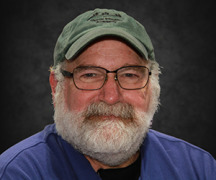In 1979 Steven Weinberg, Sheldon Lee Glashow, and Abdus Salam shared the Nobel Prize for work in formulating the electroweak theory, which explains the unification of electromagnetism with the weak nuclear force.
This is the closest we have to a Theory of Everything. It was built on the 20 different equations James Clerk Maxwell introduced in the early 1860s. In the mid 1880s, Oliver Heaviside eliminated the scalar and vector potentials and merged all 20 equations into four simplified differential equations which we know today as Maxwell’s Equations.
Make no mistake, voltage and current are very much a part of Maxwell’s Equations. They are as real as electric and magnetic fields.
One of the innovations Maxwell introduced was the concept of displacement current to provide continuity of current through an insulator, such as might fill a capacitor or transmission line. How did conduction current flow into one conductor in a capacitor and flow out the other, through the insulating dielectric?
It was by the changing electric field in the space between the conductors where bound charges were polarized, or slightly displaced. Their movement generated a new type of current from the transient motion of bound charges in the dielectric.
This new behavior Maxwell introduced suddenly revealed the connection between how a changing electric field in free space would create a displacement current, just as real as a conduction current, which would create a changing magnetic field, which would create a changing electric field, which…self-propagates. And then there was light.
The combination of electromagnetics, electroweak theory, special relativity, and quantum mechanics is sometimes referred to as quantum electro dynamics (QED) . It is the most precise theory in physics. Measurements of the fine structure constant and the g-factor of the electron match the values calculated based on QED to an astonishing eight decimal places.
In the macroscopic world of wires and cables and microstrip transmission lines, there can be no doubt that Maxwell’s Equations perfectly describe the real world to whatever level of accuracy we can ever hope to measure. Our real world of signals on interconnects: all of signal integrity, power integrity, and electromagnetic compatibility, behaves according to Maxwell’s Equations.
If you want to understand how a signal, described as an electromagnetic field and a voltage and current distribution, propagates down a transmission line and interacts with all the changes in geometry and impedances and components along the way, solve Maxwell’s Equations with the initial conditions and the boundary conditions of the conductors and insulators. You will know the evolution of the electric and magnetic fields and the currents and voltages at any location in your system in the time domain or the frequency domain.
But, “…sometimes an ok answer NOW! Is better than a good answer late.”
You can sometimes get to an acceptable answer faster by approximating Maxwell’s Equations with Circuit Theory.
We approximate the effects of electric fields with voltage differences and their interactions with conductors using capacitor elements. We approximate the effects of magnetic fields with currents and their interactions with conductors using inductor and resistor elements.
When frequency components of the voltages or currents have wavelengths that are comparable to the physical geometry, transmission line elements approximate the distributed behavior of the propagating voltages and currents. The properties of transmission lines live in both worlds. Their electrical properties arise inherently from electromagnetic field behaviors, but we can still go far describing them with simple approximations using propagating voltages and currents interacting with interconnect impedances. This approximation works incredibly well for most behaviors, but not all. Fields propagating in free space as radiation are not described by transmission line properties.
Knowing when to approximate the behavior of interconnects as lumped elements and transmission lines or when to apply Maxwell’s Equations directly is the secret to being a successful SI, PI, or EMC engineer and get to an acceptable answer most efficiently.
If you see your future in SI, PI, or EMC, you need to understand Maxwell’s Equations enough to have good physical intuition about how fields interact with interconnects to create inductance, how return currents return, how a changing voltage propagates down a transmission line and interacts with instantaneous impedances, and why current redistributes in conductors as frequency goes up.
The principles underlying SI, PI, and EMC are not magic, and they are not about mysterious energy flows in the space between conductors. They are firmly rooted in the fundamental properties of electromagnetic fields, with a 160 year long rich history. Embrace it!
Published in the SIJ July 2020 Print Issue, Editor's Note: Page 6.


